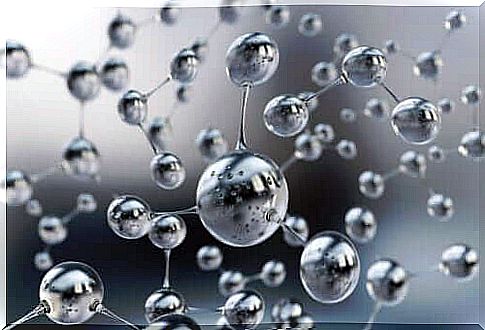Prebiotics In Breast Milk: How Do They Work?

Generally, we identify prebiotics with soluble fiber compounds that, once ingested, cannot be digested on their way up the upper gastrointestinal tract. Later, when the prebiotics reach the large intestine, the resident bacteria, which are able to process this fiber, use them as an energy source. As a result, prebiotics stimulate the growth of bacterial colony populations.
We must not confuse prebiotics with probiotics
As their name suggests, prebiotics and probiotics have a relationship, but it’s important to understand how they differ. By definition, probiotics are live microorganisms that exert a positive influence on the state of health. Among them, there are lactobacilli and bifidobacteria (both belonging to the group of bacteria called lactic acid), as well as saccharomycetes (a genus of yeasts).
Prebiotics, on the other hand, are not bacteria, but compounds that provide the food source that allows probiotics to live and proliferate in their environment, the colon. Prebiotics are substances that serve as food for probiotic organisms.

Why are bacteria residing in our gut important?
First, they are very numerous. Bacteria make up the majority of the flora present in the colon. They account for more than half of the dry mass of feces.
Furthermore, their composition is highly variable. The gut microbiota is made up of over a thousand species. We know that in each person there is a numerical dominance of about 30 or 40 species.
Their importance lies in the fact that this immense amount of microorganisms forms an extraordinarily mature ecosystem that is resistant to the introduction of changes from the outside. This balance is what, from a medical point of view, is called “intestinal homeostasis”.
Exposure to antibiotics, enteric infections or changes in diet can alter this homeostasis. There is evidence that gut microbiota imbalance is associated with the onset of a long list of diseases. In an attempt to restore this balance, prebiotics and probiotics are ingested and, in severe cases, fecal transplants are performed.
The content of breast milk is rich in prebiotics and probiotics
Nowadays, science knows that breast milk is an irreplaceable element, as it is a factor in the formation, development and composition of the baby’s intestinal microbiota.
It is still a little known fact that milk contains an important number of lactic acid bacteria that the mother “gives” to her baby, to initiate the colonization of the intestine. Infants are believed to ingest around 800 milliliters of milk per day and receive between 100,000 and 10 million bacteria daily.
As if that weren’t enough, the mammary glands possess a mechanism that allows them to produce an extraordinary variety of prebiotic compounds. They are called oligosaccharides. The combined ingestion of probiotics and prebiotics represents a winning strategy that nature adopts to encourage the “good bacteria” to colonize the infant’s intestine.
Milk carbohydrates can consist of only one sugar molecule: these are monosaccharides. For example, glucose, galactose and fructose. Oligosaccharides consist of five types of linked monosaccharides or “blocks”, which combine randomly to form linear or branched structures of varying sizes.

Surprising Information Of Breast Milk Prebiotics
The proliferating effect that milk has on lactic acid bacteria is not associated with a single substance, but obeys several factors. In particular, the prebiotic effect of milk is attributed to the low concentration of proteins and phosphates, to the presence of lactoferrin, lactose, nucleotides and oligosaccharides.
The true prebiotic role played by each of these substances has not yet been clearly defined, with the exception of that of oligosaccharides, which represent the most studied group.
However, it is still unknown what determines the fact that the enormous assortment of oligosaccharides varies from woman to woman and, in the same woman, from one stage of breastfeeding to another. It is estimated that the approximate number of oligosaccharides can range from around 150 compounds to hundreds of thousands. Within this universe, we know that there is a dominance by the galacto-oligosaccharide (GOS) series.
Additional functions offered by breast milk oligosaccharides
The variety of milk oligosaccharides is inimitable. Numerous studies have shown that these compounds, in addition to being “food for bacteria”, can perform other functions:
- They can fool pathogenic viruses and bacteria. There are variants that emulate the oligosaccharides of the intestinal wall; in particular, those that use pathogens to invade the healthy cell. When the pathogen joins this bait, infection is avoided.
- Furthermore, they are able to regulate the activation of immune cells.









